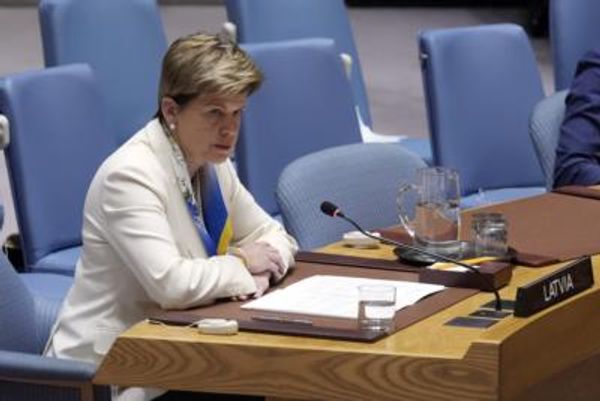
Russia’s central bank has hiked interest rates by 3.5 percentage points in an emergency move aimed at halting the rouble’s recent slide, after it fell to its weakest point in almost 17 months.
The decision to raise the key rate from 8.5% to 12% was announced after an extraordinary meeting of the bank’s board of directors, called after the rouble plunged past the psychologically key level of 100 to the dollar on Monday morning.
The central bank said it had taken the decision to “limit risks to price stability” after several inflation indicators rose to over 7% in the past three months, a significant deviation from its target of 4%.
Analysts said the move appeared to “underwhelm” markets, with the currency falling in value on Tuesday morning, and cautioned that financial stability would be hard to achieve while western economic sanctions on Russia remained in place.
“With conflict in Ukraine entrenched, the sanctions grip tight and an ongoing voracious demand for new weapons, there is no easy escape from the economic fallout of the invasion,” said Susannah Streeter, the head of money markets at investment platform Hargreaves Lansdown.
Russian officials on Monday also discussed reinstating capital controls to prop up the tumbling ruble, Bloomberg reported, but added that no decision was made on the issue.
The rouble has weakened by 26% against the dollar this year as a result of a collapse in export revenues and growing military spending, making it the third worst-performing global currency in 2023.
The decline has led to calls from senior Kremlin officials for higher borrowing costs.
President Vladimir Putin’s senior economic adviser, Maxim Oreshkin, on Monday blamed the weak rouble on “loose monetary policy” in an op-ed piece for the Tass news agency, adding that the central bank had “all the tools necessary” to stabilise the situation.
On Monday evening, the currency gained strongly shortly after the bank’s meeting was announced, rising by more than 2% to about 98.5 against the US dollar, before gains fell back below 98 on Tuesday morning after the rate hike was announced, Moscow exchange data showed.
“As long as the war continues it just gets worse for Russia, the Russian economy and the rouble,” said Timothy Ash, a strategist at the investment firm Bluebay Asset Management. “Hiking policy rates won’t solve anything – they might temporarily slow the pace of depreciation of the rouble at the price of slower real GDP growth – unless the core problem, the war and sanctions are resolved.”
The rouble has had a period of turbulence since Russia invaded Ukraine in February 2022, dropping to a record low of 150 to the dollar two weeks after the start of the war before sharply recovering after the central bank imposed strict capital controls that limited the flow of money out of the country.
Shortly after Russian troops entered Ukraine, the bank more than doubled interest rates to 20% and refused to open the Moscow stock exchange as it sought to protect its economy from Ukraine-related sanctions that sent the value of the rouble plunging by a fifth.
Since then, the bank has gradually unwound the increase to 8.5% in an effort to stimulate economic growth.
By last summer the rouble had rebounded to a seven-year high as a rise in oil and gas prices, partly a result of the invasion, helped Russia raise export revenue while consumer imports fell.
But Russia’s currency started to fall this year after the west imposed price caps and embargos on Russian oil, while domestic imports recovered amid an increase in government borrowing.
The government has also spent billions on the defence industry to continue the war in Ukraine, with many critical goods still coming from abroad.
“The rouble is gradually losing value because the current prognosis is that the war will, and Russian budget deficits [to fund it] will go on for years to come, until Putin dies or steps down,” Konstantin Sonin, a Russian economic professor at the University of Chicago, wrote on Twitter last week.
Last week, the central bank said Russia’s current account surplus shrank to $25bn (£19.7bn) in January to July, an 85% decrease compared with the same period last year.
The central bank governor, Elvira Nabiullina, previously an economic adviser to Putin, is widely credited in Moscow for helping Russia weather an unprecedented flurry of western sanctions imposed shortly after the start of the war.
In the short term, a weaker rouble could help the authorities fund Russia’s extensive war spending. The country sells its oil in foreign currency and the current exchange will buy more roubles at home.
However, it could also lead to financial panic and inflation, triggering memories in Moscow of the battering the currency took during the 1998 Russian financial crisis.







